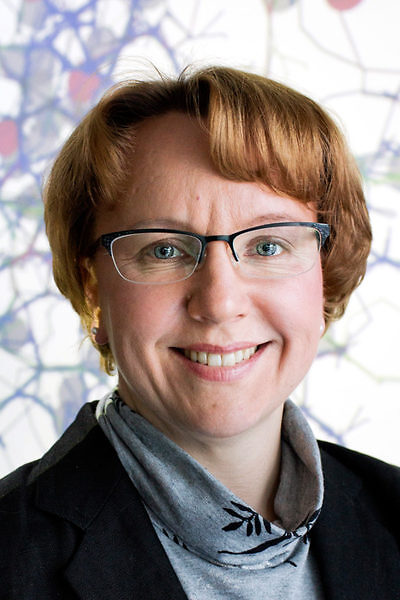"Computational modeling of astroglia-neuron interactions" Prof. Marja-Leena Linne

Date
Location
Description
Speaker: Prof. Marja-Leena Linne, Tampere University of Technology
Title: Computational modeling of astroglia-neuron interactions
Abstract: Glial cells are known to participate in a variety of brain functions, including homeostasis, metabolism, neuronal survival in pathological circumstances and neurovascular coupling. A particular type of glial cells, the astrocytes, also known as astroglia, extend their processes into close proximity to synapses, thereby possibly taking an active role in synaptic transmission, and affecting learning and memory. The complexity of the dynamic molecular and cellular level interactions of neurons and astrocytes is overwhelming. This complexity underlines the demand for detailed, integrative computational models for advancing our understanding of the contribution of astrocytes to the functions of the brain (see also [1]). In this presentation I will introduce the state-of-the-art in computational modeling of astrocyte-neuron interactions and astrocyte calcium excitability.
I will first give a short introduction into the roles of glial cells, including astrocytes, microglia and oligodendrocytes, in the brain. I will then present the previously used computational modeling approaches for astrocytes and astrocyte-neuron interactions, based on the first detailed evaluation of existing computational models in vivo and in vitro [2, 3]. There exist around 80 different models, including the ones based on our own work [4, 5], to explain a variety of biological phenomena in astrocytes. We have evaluated several aspects of these models in detail, e.g. the type of the biological entities they describe, the evolution of models from each other, and reproducibility and comparability issues of the models. We have concluded that models describing the subcellular and intercellular events in astrocytes have limitations and provide explanations to a relatively narrow set of astroglial phenomena. Moreover, in order to facilitate reproducible science, we propose several criteria that computational glioscience models should meet. I will conclude by discussing future directions in the field of computational glioscience, including the development of models for the ways astrocytes modulate the synaptic functions in a variety of separate brain areas.
- M.-L. Linne and T.O. Jalonen. Astrocyte-neuron interactions: From experimental research based models to translational medicine. Progress in Molecular Biology and Translational Science. 123:191-217, 2014.
- T. Manninen, R. Havela, and M.-L. Linne. Computational models of astrocytes and astrocyte-neuron interactions: Characterization, reproducibility, and future perspectives. Accepted to Computational Glioscience, Editors M. De Pitta and H. Berry, Springer, 2017.
- T. Manninen, R. Havela, and M.-L. Linne. Reproducibility and comparability of computational models for astrocyte calcium excitability. Frontiers in Neuroinformatics 11:11, 2017.
- E. Toivari, T. Manninen, A.K. Nahata, T.O. Jalonen, and M.-L. Linne. Effects of transmitters and amyloid-beta peptide on calcium signals in rat cortical astrocytes: Fura-2AM measurements and stochastic model simulations. PLoS ONE 6(3): e17914, 2011.
- T.O. Jalonen, R.R. Margraf, D.W. Wielt, C.J. Charniga, M.-L. Linne, and H.K. Kimelberg. Serotonin induces inward potassium and calcium currents in rat cortical astrocytes. Brain Research 758: 69-82, 1997.
Biography: Dr. Marja-Leena Linne is a Senior Scientist and Head of Computational Neuroscience Group (CNS) at Tampere University of Technology, Faculty of Biomedical Science and Engineering, in Tampere, Finland. As an electrical engineer with a Ph.D. in information technology, she has combined neuroscience and engineering to become both a wet-lab electrophysiologist and computational neuroscientist. She has a passion to understand how the mammalian brain learns to store and recall memories. She currently develops biophysically and biochemically detailed computational models of neural systems to explain the complex mechanisms underlying neurotransmission and neuroplasticity in the brain. Her long-term goal is to transfer the developed models into artificial intelligence and other engineering applications. Dr. Linne is a task leader in the EU FET Flagship Human Brain Project (HBP) and actively participates in developing the activities of the European Institute of Theoretical Neuroscience (EITN) in Paris. She is past Board member of Organization for Computational Neuroscience (OCNS), and she has served in training committees of international neuroscience organizations, including Neuroinformatics Coordination Facility (INCF) and Federation of European Neuroscience Societies (FENS). She is the founder of Baltic-Nordic Summer School in Neuroinformatics.
Subscribe to the OIST Calendar: Right-click to download, then open in your calendar application.



